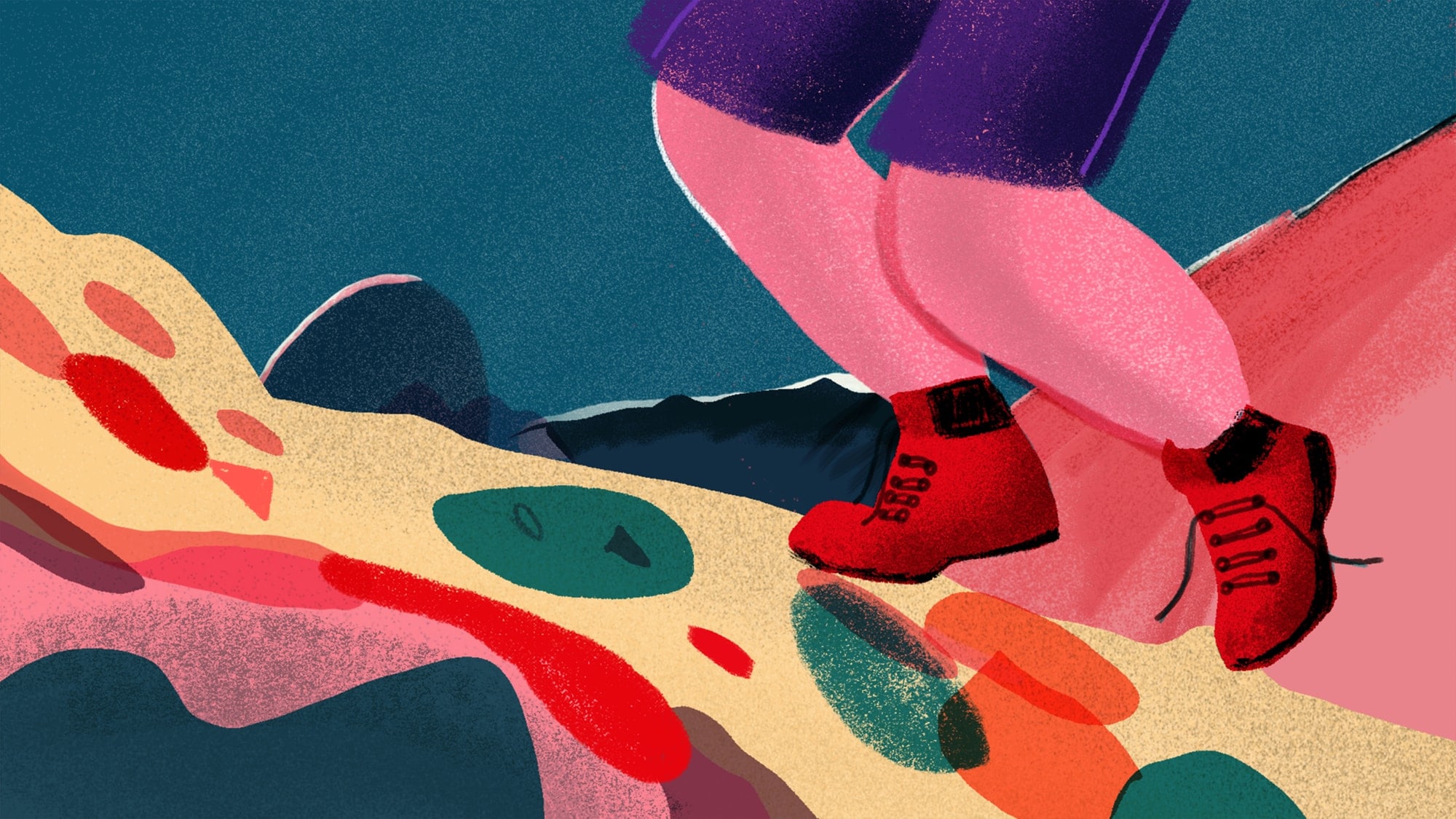
Kathrin Steinbacher – nominated for ‘In Her Boots’
What is your story?
I’m Kathrin and I am an animation director and illustrator. I grew up in Austria but am now based in London where I also studied Animation at the Royal College of Art and Illustration Animation at Kingston University.
What is the story of your short animation film ‘In Her Boots’ and what is the wider story it is aiming to tell its viewers?
The story revolves around Hedi – the main character who is experiencing strange things while her granddaughter is visiting. She suddenly embarks on a hiking journey, to the deepest parts of the Alps, revealing the reason for her devoted attachment to her hiking boots.
In terms of the wider story: the film discusses questions regarding dementia and how society deals with it. I was trying to question some of the preconceptions people have around the disease. I added a lot of humorous elements and was trying to add some depth and contrast to this whole discussion to communicate that a person suffering from this disease can still have a fairly good life and fun.
The main character in the film is an independent and strong woman and is trying to retain her identity and autonomy despite her age and onset of dementia. And her granddaughter is giving her freedom and responsibility. So I guess the wider story focuses on giving people with dementia freedom because they are still active members of society and they must make their own decisions to feel valued.
Is it important for you to represent your culture in your work? And how do you think storytelling benefits cultures and communities?
I think this is something I do automatically because I usually make films about my personal experiences. The way I see the world today is pretty much influenced by my upbringing and cultural background. And I like to question that.
I definitely think storytelling benefits cultures and communities a lot. It is immensely important to give underrepresented people a voice. It is important to get heard and I like to give people I know from the place I grew up a voice to critically discuss some issues and topics that are difficult to talk about.
Can you talk about your creative process, your technique or tools of drawing and animation?
The process usually changes a bit depending on the film and technique. I decide on the materials based on the story. I think lines and textures can serve as metaphors and believe that textures and lines help us to evoke our emotional systems. If, for example, the scene deals with very rough emotions, I like to use rough textures and lines. That’s why I have used charcoal for my film ‘The Woman Who Turns Into A Castle’ for example. I would usually work with animatics. I storyboard the film, but the film constantly changes. And all my films are done frame by frame and are heavily research-based.
Do you think of animation as a form of self-expression?
I make films about how I see the world, my interests and things that bother me. So, yes I would say it is a form of self-expression. I also see animation as a form of therapy because I address issues I struggle to put into words.
What made you move from art into animation?
I found it more exciting to see my illustrations move. They could turn and morph into anything. It is less restricted.
Do you think there are benefits to storytelling with animation rather than live-action?
How could I ever answer this in just a couple of sentences? I basically wrote a whole dissertation about the topic. But to keep it as short as possible: Yes! There are a thousand benefits. Animation offers a unique contribution to the exploration and expression of rare human states, subjective experiences and the experiential. It helps to make the invisible visible because the medium is capable of capturing that which a camera may not. This virtually limitless capacity for originality and novelty grants the ability to portray things that do not yet exist or are difficult to imagine, such as emotions or feelings. Unrestricted by the dictates of photographic realism, animation can, through its unique vocabulary, render such experiences palpable.
What advice would you give to people starting out, trying to produce their own animations?
Have trust in your audience and yourself. Don’t change anything in your film that feels wrong to you. And probably most importantly, NEVER compare yourself to others.




